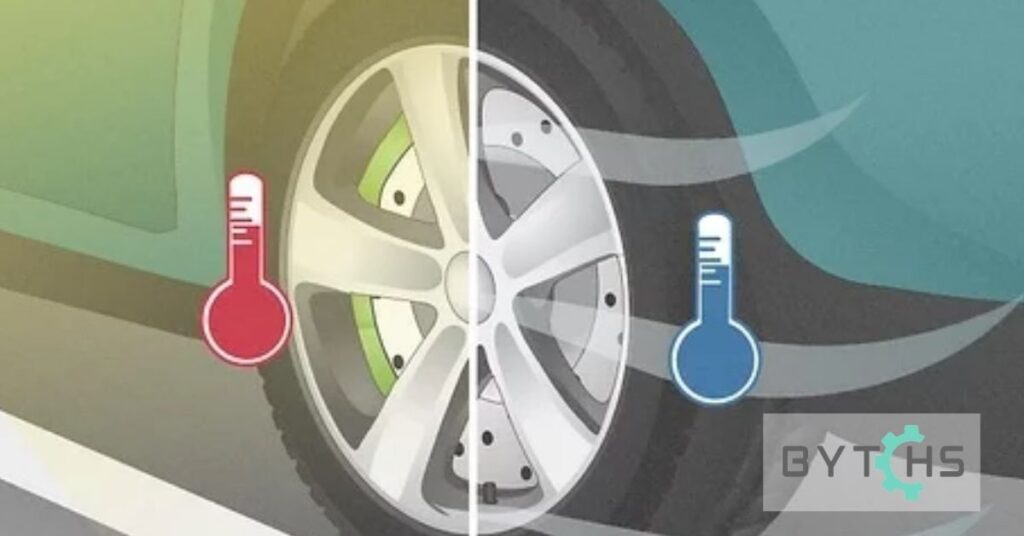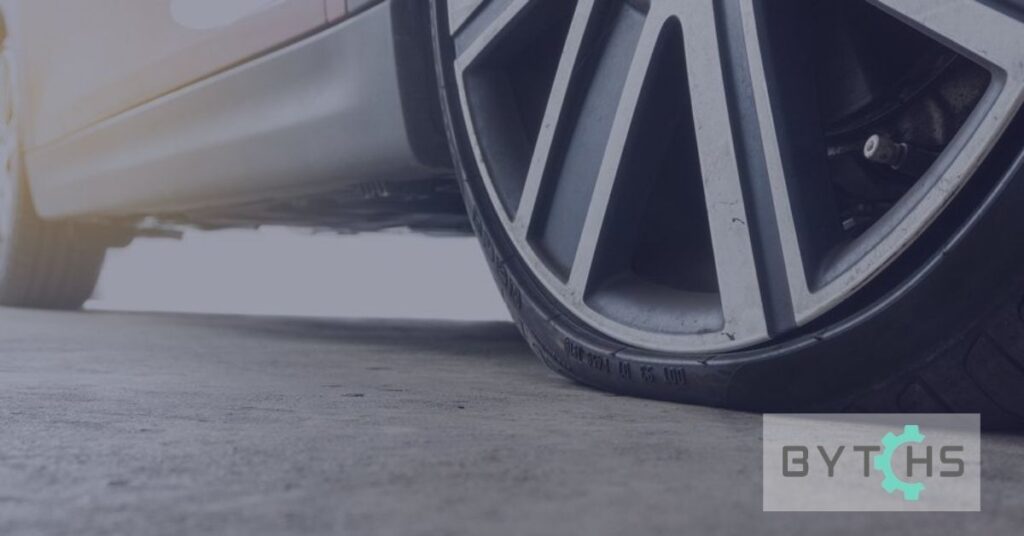Have you ever walked out to your car, ready to hit the road, only to find that your tire looks a little deflated? If you’ve noticed your tire losing around 5 PSI in just a week, you’re probably wondering what’s going on.
Quick Answer:
A car tire losing 5 PSI in a week can be due to several reasons: temperature changes cause air to contract or expand; natural air loss through the tire’s rubber; faulty valve stems or missing caps; tiny punctures from road debris; damaged or corroded wheel rims; or issues with the tire bead, where it meets the rim. Regularly check tire pressure, inspect for damage, and seek professional help if needed.
7 Reasons of Car Tire Lose 5 PSI in a Week
Let’s break down the reasons behind this common issue and what you, as a car owner or driver, can do to prevent it.
1. Temperature Changes: A Sneaky Culprit
Temperature changes are often the hidden reason your tire pressure drops. Here’s how it works: when the weather gets colder, the air inside your tire contracts. For every 10°F drop in temperature, your tire can lose 1-2 PSI. So, if you park your car outside on chilly nights, it’s not surprising to find your tires a bit low in the morning.
What You Can Do: Don’t panic if you see this happening. It’s normal! Instead of rushing to fill your tires, wait until you’ve driven for a bit. The tires warm up as you drive, and the pressure can return to normal. But if it doesn’t, it’s time to add some air.

2. Natural Air Loss: The Slow Leak You Can’t Avoid
Did you know that even with perfect tires, you’ll still lose some air over time? It’s called permeation. Air molecules slowly sneak through the rubber walls of the tire. This natural process can lead to a loss of 1-3 PSI per month. And guess what? Older tires lose air faster because the rubber wears down, making it easier for air to escape.
Pro Tip: Make it a habit to check your tire pressure at least once a month. That way, you can catch any gradual losses before they become a bigger issue.
Also Read: How Do You Inflate A Car Tire With A Bike Pump?
3. Valve Stem Issues: Small Part, Big Impact
The valve stem may be small, but it plays a big role in keeping air inside your tire. Over time, these stems can crack, wear out, or become damaged. This can lead to slow leaks. And don’t forget those little valve caps! If they’re missing, dirt and moisture can get in and mess up the valve, causing more leaks.
Quick Check: Take a close look at your valve stems. Are they cracked or worn? Are your valve caps missing? If so, replace them ASAP. If you suspect a leak, a quick trip to your mechanic might be in order to replace the stem.
4. Tiny Punctures and Road Debris: The Invisible Threat
Roads are full of surprises, and not all of them are pleasant. Nails, screws, and even tiny shards of glass can puncture your tire. Sometimes these punctures are so small you can’t see them, but they’re enough to cause a slow leak that drops your PSI day by day.

How to Spot a Leak:
- Listen for Hissing: You might hear air escaping if the puncture is big enough.
- Try the Soapy Water Test: Mix some soap with water, spray it over your tire (especially the tread and sidewalls), and watch for bubbles. If you see any, you’ve found your leak.
- Submerge the Tire: If you’re feeling ambitious, remove the tire and submerge it in water. Bubbles will point out where the air is escaping.
5. Wheel Rim Damage: A Problem Hiding in Plain Sight
Your tire needs a perfect seal with the wheel rim to hold air properly. If your rim is bent or corroded (thanks to age or exposure to road salt), that seal can weaken, leading to slow leaks. It’s especially common in older cars or after hitting a pothole.
Solution: Have a professional inspect your rims for bends or corrosion. They can clean and reseal the rim or recommend repairs if needed.
6. Tire Bead Damage: Where the Tire Meets the Rim
The tire bead is the part that makes contact with the rim. If it’s damaged or if debris sneaks in between the bead and the rim, air can escape. Sometimes, this happens if a tire isn’t seated properly during installation, or if age has weakened the rubber.
What to Do: If you’ve had a tire installed recently and noticed pressure loss, go back to the shop and ask them to double-check their work. For older tires, keep an eye out for cracks or signs of wear near the bead.
7. Schrader Valve Issues: The Tiny Mechanism Inside
You might not think much about the little mechanism inside the valve stem, but the Schrader valve can be a hidden source of leaks. Over-tightening or wear can cause it to let air escape slowly.
DIY Fix: You can use a valve core removal tool to inspect and replace it if needed. Just be careful not to over-tighten when you put the new one in.

How to Find and Fix Leaks
Finding and fixing leaks can seem tricky, but here’s how you can do it:
- Listen and Feel: A hissing sound or a faint air escape when you run your hand over the tire can help pinpoint the leak.
- Try Soapy Water: Spray soapy water on the tire, valve, and bead area. Bubbles mean air is leaking.
- Submerge the Tire: Take the tire off, put it in water, and watch for bubbles.
Fixing Options:
- Plug Kits and Sealants: For small punctures, you can use a plug kit or sealant. This is best for the tread area, not the sidewall.
- Replace Valve Stems: If the stem is damaged, use a valve core tool to swap it out.
- Restore Rims: Clean and reseal corroded rims. For severe issues, see a professional.
Prevention Tips for Maintaining Tire Pressure
- Check Weekly: Make it a habit to check your tire pressure weekly, especially if you’ve noticed recent losses.
- Check When Cold: Always check tire pressure when your tires are cold for the most accurate reading.
- Use a Reliable Gauge: A good digital or dial gauge can make all the difference.
Also Read: Why do my RC car’s tires wear out so fast?
Why Proper Tire Pressure Is Critical
Keeping your tires at the right PSI is more than just a box to check—it’s essential for your safety and your wallet. Under-inflated tires:
- Lower Fuel Efficiency: Even a few PSI under the recommended level can make you spend more on gas.
- Wear Out Faster: Improper pressure causes uneven wear, shortening the life of your tires.
- Increase Risk of a Blowout: Low PSI means more heat buildup, which could lead to a blowout.
Did You Know? A tire that’s 25% below its recommended pressure triples your risk of a tire-related crash.
Rely on Your TPMS, But Not Completely
Most cars made after 2007 have a Tire Pressure Monitoring System (TPMS). It’ll alert you if your tire pressure drops too low (usually 25% under the recommended level). While this system is great, it’s not foolproof. Check your tire pressure manually to catch smaller losses before they trigger the TPMS.
Wrap-Up: Stay Safe and Save Money
Losing 5 PSI in a week can be normal, but it shouldn’t be ignored. Regular checks and maintenance help keep your tires in top shape. This keeps you safer on the road, saves you money on fuel, and extends the life of your tires. If you’re ever unsure, don’t hesitate to get your tires checked by a professional.
- Why Does My Car Tire Lose 5 PSI in a Week? - 4 November 2024
- How Do You Inflate A Car Tire With A Bike Pump? A Practical Guide in 5 Easy Steps - 30 October 2024
- Why do my RC car’s tires wear out so fast? Tips to Maintain Performance Over Time - 18 October 2024



